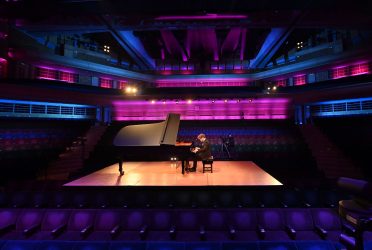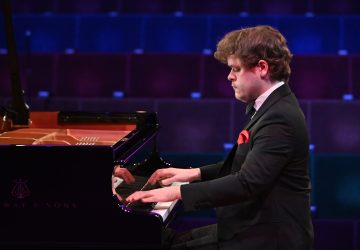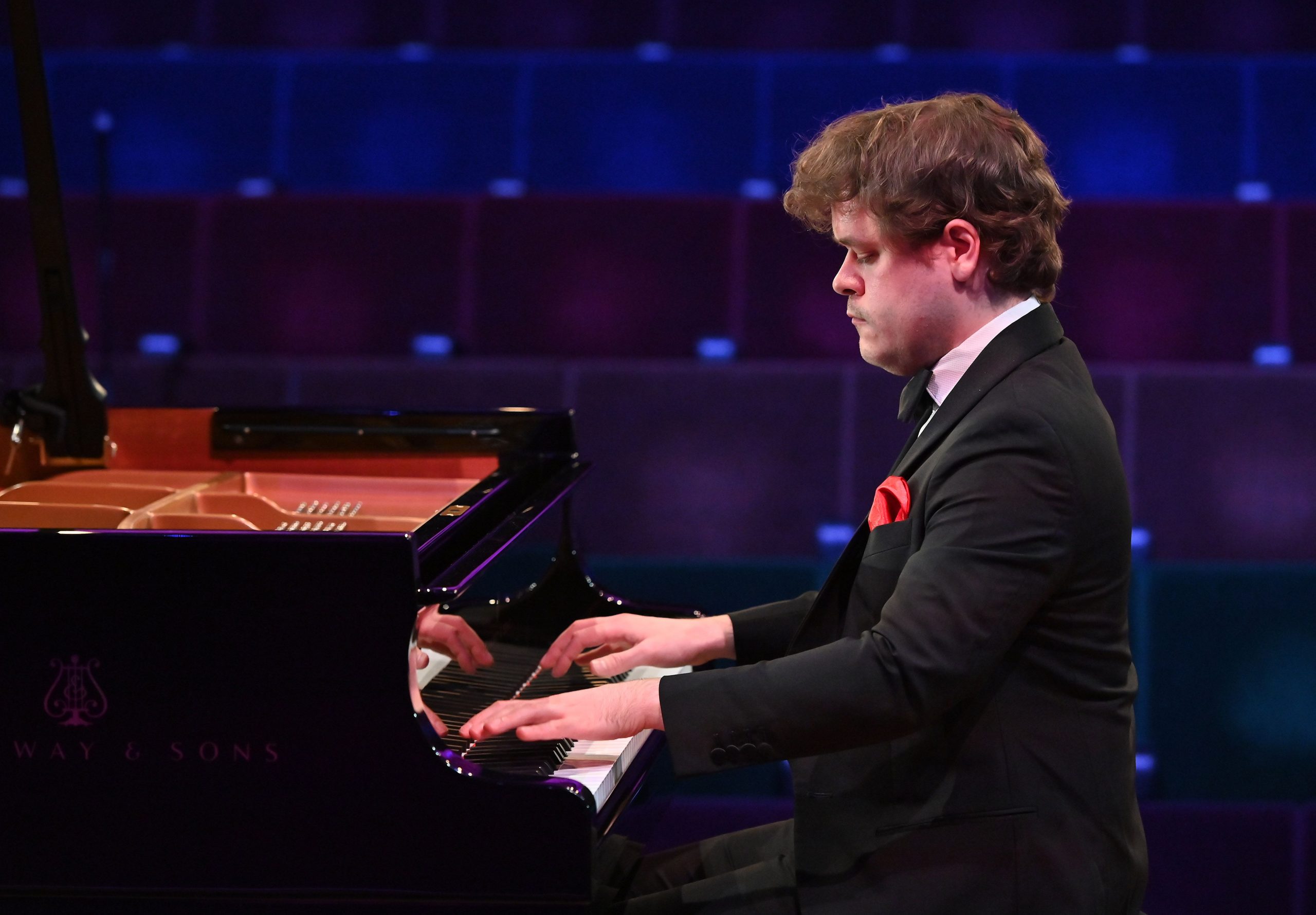 United Kingdom Schubert/Liszt, Chopin, Ginastera, Ravel: Benjamin Grosvenor (piano) with Lucy Parham (presenter). Livestreamed from the Barbican Hall, London (click here), 10.3.2021. (CC)
United Kingdom Schubert/Liszt, Chopin, Ginastera, Ravel: Benjamin Grosvenor (piano) with Lucy Parham (presenter). Livestreamed from the Barbican Hall, London (click here), 10.3.2021. (CC)

Schubert/Liszt – Ave Maria, S 558/12
Chopin – Piano Sonata No.3 in B minor, Op.58
Ginastera – Danzas Argentinas, Op.2
Ravel – Gaspard de la Nuit
Warm ambient lighting countered the potential coldness of a Barbican Hall devoid of audience – a camera angle from back of stage allowed us to see it was completely empty – for this glorious recital by Benjamin Grosvenor (opening the Live from the Barbican spring/summer 2021 series); the glow from his playing was potentially enough to illuminate the hall in itself. The Steinway was placed on a second smaller stage, an island platform, in front of the one we normally see. Throughout, there was excellent camera work, couched in intimate lighting, with blues of seats and orange/red of the lights on the doors and sides and tasteful use of an overhead camera.
The Schubert/Liszt Ave Maria can be found on Grosvenor’s latest (all-Liszt)) album on Decca. There were lovely singing lines were the constant here, the ever-elaborate decorations taking us ever closer to Liszt’s own world. It is fascinating how Liszt extends the song and personalises it; Grosvenor has the perfect measure of the piece.
Next was Chopin’s Third Sonata and one immediately felt a very different touch creating the perfect sound for Chopin. Just as importantly, one could hear the interaction of lines (it is so important to acknowledge Chopin’s debt to Bach). This was particularly evident later on, where one also hears the modernity of Chopin’s writing. Grosvenor was able to give the music space, because of the larger grasp at work here of the structure. A very sweet cantabile touch contrasted with the more granitic sections of the first movement. The Scherzo was impeccably pedalled; every detail was there to be enjoyed and again, those contrasts of texture and articulation were well calibrated, this time the energy of the Scherzo smouldering more obviously underneath the purported relaxation of the Trio. The slow movement was a dream, interior, heartfelt, the gestures of the opening of the Finale a wake-up call to action. That sense of structure returned full force for this final movement, Grosvenor pacing Chopin’s waves until the torrent of the closing pages (played with accuracy and consummate artistry).
Straight on to Ginastera, the three Danzas Argentinas (Argentinian Dances), the hall now coloured in vibrant red. The first, ‘Danza del viejo boyero’ (Dance of the Old Herdsman) active, the staccato nervously ticking away, gestural. The second piece, ‘Danza de la moza dolorosa’ (Dance of the Donosa Girl) was properly reflective and song-like; particularly impressive was how Grosvenor suggested a duet of two sung voices in the right hand at one point. The finale, ‘Danza del gaucho matrero’ (Dance of the Outlaw Cowboy) was abuzz with energy; most importantly, the sense of an ecstatic dance was palpable. The virtuosity of this finale was both the ideal conclusion and the perfect bridge to the concluding Ravel.

Finally, Ravel’s Gaspard de la Nuit. Ravel’s portrait of the water nymph Ondine, with Grosvenor now in front of a projected cool blue, offered another masterclass in texture and how to adjust one’s sound according to the composer in hand. Translucency was the keyword of this ‘Ondine,’ followed by the tolling bells of ‘Le Gibet,’ an excursion into deepest E flat minor; it requires a rock-solid sense of rhythm, something Grosvenor excels in. Another aspect of rhythm, that of propelling a movement forward, comes into force in ’Scarbio’, here gorgeously impish (and what expert repeated notes Grosvenor is capable of). There were no concessions to technique; the whole reading from first to last was born of Grosvenor’s sonic conception of the piece.
One encore, into which Grosvenor segued quickly but smoothly: a suavely elegant Saint-Saëns’s ‘Le Cygne’ (‘The Swan’, from Carnaval des animaux) arranged by Godowsky. A thought: Grosvenor’s Chopin is top rank; how about some Chopin/Godowsky Chopin Etudes in Benjamin Grosvenor’s programmes/recordings? Listening to those harmonic tweaks with which Godowsky so beautifully peppers Saint-Saëns’s musical surface, one was reminded of just how imaginative and resourceful Godowsky was. Ladling a genius upon a genius – what could be better?
A chat between Grosvenor and Lucy Parham completed the experience, including a segment from Ulrich Gerhartz of Steinway & Sons: it included the process of how Grosvenor chose the piano for his concert (a choice of three, as Gerhartz explains; and we hear how Gerhartz himself spent some time with all three instruments to play them in a few days previously – they had been sitting dormant, thanks to COVID, for long months). Interesting to get an in-depth glimpse of Grosvenor’s selection process, and indeed of Gerhartz’s in-depth knowledge of the particular instruments on hand. The piano chosen was selected by Gerhartz in March 2019 in Hamburg, and it arrived in the UK in September 2020, and was receiving its first major outing on this occasion.
Colin Clarke
